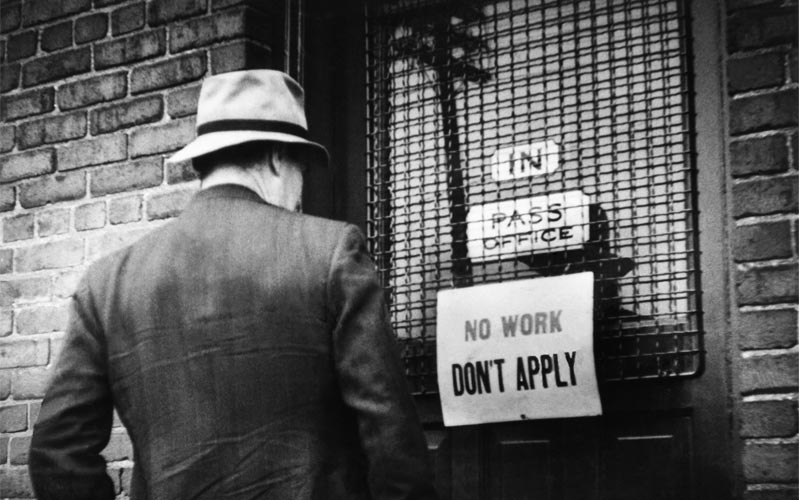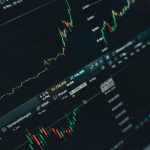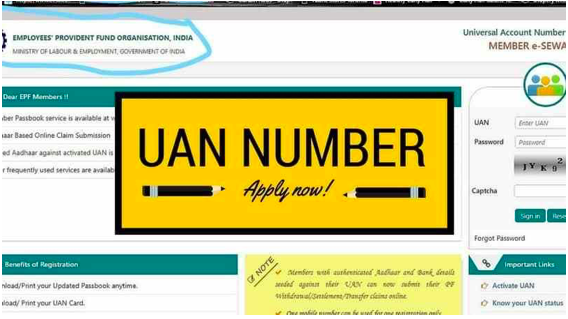With the COVID-19 pandemic hitting us severely, many were scared of the unexpected recession or Depression. At the same time, recession and Depression are two different words with two different meanings. Both have various reasons to occur and different periods as well. Therefore, in this article, we will talk about recession and Depression in detail. For knowing both the terms even better, we will also discuss the difference between recession and Depression. Hence, if you are scared that the economy might be hit with another depression or recession, scroll down to know more.
Table of Contents
What is a Recession?
A recession is a notable decline in economic activity. A recession lasts for more than a few months, if not a year. It is often said that recession occurs when Gross Domestic Product or GDP growth rate is negative for either two consecutive quarters or more. Hence, the National Bureau of Economic Research or NBER considers the other four factors. The factors are retail sales, employment, income, and manufacturing. So, the data comes out every month. So, when the other economic indicators or factors decline, so will the GDP of a country.
Moreover, the NBER defines a recession as “a significant decline in economic activity spread across the economy, lasting more than a few months…” The NBER is a private non-profit that announces when the recession will begin and end. Moreover, it is the national source that measures the business cycle’s stages.
The Bureau uses the judgment, expertise, and skill of its commissioners to determine whether the country or the economy is in a recession. It uses monthly data to analyze when a peak has occurred and when the economy will decline. Hence, this allows the Bureau to be even more timely and precise with its measurements and judgments.
Julius Shiskin suggested the first textbook definition of a recession. He was even more precise:
- A decline in real GNP or gross national product for at least two consecutive quarters.
- GNP declined by 1.5%
- Manufacturing decline for the past six months
- Nonfarm payroll employment declined by 1.5%
- A significant employment reduction in 75% of industries for six months or more
- Unemployment rises two-point, at least 6%
Shiskin suggested this definition as the economy wasn’t sure about a recession in 1974. This is because the economy was suffering from stagflation. Price did not fall, but the GDP was negative.
What are the six economic indicators of recession?
To know the difference between a recession and Depression even more clearly, one must understand the different causes of both Depression and recession. So, we will first start with the recession.
Now, the essential recession indicator is the real GDP. This comprises of every production by individuals and businesses all over the United States of America. Why is it called “real”? This is because all inflation effects are removed.
When the real GDP growth rate turns negative, this signals a recession. But, the negative growth can turn positive as well in the next quarter. Therefore, it is challenging to determine the recession by looking at GDP alone.
Hence, the NBER has other factors or indicators of recession. So, you have to look at the different factors as well to determine the recession. Real GDP is not the only determinant.
- Real Income
This measures the inflation-adjusted personal income. Transfer payments like welfare payments and Social Security are removed. Therefore, when the real income declines, the demand and consumers’ purchase declines as well.
- Employment
Real income along with employment tells the commissioners about the overall health scenario of the economy.
- Manufacturing
The Industrial Product Report measures the manufacturing sector’s health. Therefore, the commissioners are informed through the reports.
- Wholesale-Retail Sales
Wholesale-retail sales and manufacturing that are inflation-adjusted tell the commissioners how businesses and firms respond to consumer demands.
- GDP Estimates Monthly
The Macroeconomic advisors provide the commissioners with monthly GDP estimates. Hence, the NBER also looks at those estimates and reports.
Moreover, also note that the stock market in no way is an indicator of recession. Stock prices reflect public companies’ anticipated earnings. The investors’ expectations are sometimes pessimistic and sometimes optimistic. Hence, this makes the stock market even more volatile than the U.S. economy.
When the economy enters a recession, the stock market will enter a bear market. This will be indicated by the 20% decline or even more for at least two months. Moreover, a stock market can also cause a recession. This is because a lot of investors lose confidence in the economy.
Recession Warning Signs
So, if the economy happens to enter a recession, then there are always warning signs. During a recession, a negative quarter growth can occur. This will be followed by several other positive quarters. And, then again, the economy will be hit by a quarter of negative growth.
A recession period is short. It can vary from nine to eighteen months. But, the recession’s impact can be long lasting.
The impending recession’s first sign could be manufacturing jobs. Manufacturers receive a large amount of orders months in advance. The durable goods order report measures that. Now, if that declines or decreases, then so will factory jobs. So, when manufacturers stop hiring people, and the production is less, then the other economic sectors will slow or decline.
Moreover, a fall-off or decrease in consumers’ demand is one of the chief culprits behind slowing growth. As sales decreases and drops, the companies and business stop expanding as well. Therefore, soon afterwards, they stop hiring new employees as well. Hence, leading to unemployment in the economy and the youths. So, by this time, the recession is already underway.
Hence, these are warning signs of recession you should look for. If you wonder if your economy enters a recession, you must consider the consumers’ demand and manufacture simultaneously. GDP is not just the only indicator. Other factors do lead to recession.
How can recession affect you?
Recessions are destructive nonetheless. This is because it creates widespread unemployment in the economy. Hence, this is why it is harmful, as so many people are affected by it. The consumers’ purchases and demand fall off due to unemployment. Moreover, businesses and mostly local and small businesses can quickly go bankrupt.
In quite a few recessions, people lose their homes as they cannot pay the mortgage amounts. Also, young people are unable to get good jobs after they complete their schools and colleges. Hence, this can entirely throw off an individual’s career. Recession massively impacts lives.
Recession Examples
The best example of a recession is the Great Recession that began in December 2007 and ended in June 2009. The real GDP declined in the first, third, and fourth quarters of 2008. The real GDP also declined in the 2009 first quarter.
When the recession began in 2008 first quarter, the GDP declined to 2.3%. In January 2008, the economy lost nonfarm 17,000 jobs. If measured by duration, then the 30-month employment duration was longer than the latest dow, from February 2001 to August 20003. That’s another sign of a recession is underway.
Unlike most of the recessions, housing demand slowed first. Therefore, most experts thought it was merely the end of the housing bubble. And, definitely not the start of a recession. The NBER finally declared the Great Recession over by June 2009. It was undoubtedly the worst recession than the Great Depression. It had five economic contractions, four consecutive, in 2008 and 2009. Also, it lasted for 18 months, the longest since the Great Depression.
Another example we can refer to is the 2001 recession. It did not meet the textbook recession definition as it didn’t have two consecutive quarter contraction. But, the NBER stated it lasted from March 2001 to November 2001. Moreover, GDP contracted as well in the first and third quarters.
What are the benefits of a recession?
Sounds unlikely, right? How can a recession be beneficial? Well, the only good thing about it is it cures inflation. The Federal Reserve must balance between economic slowing to prevent inflation without exciting or triggering a recession. The Fed usually does it without any help from the fiscal policy.
Politicians, controlling the federal budget, always try stimulating the economy as much as feasible through lowering property taxes, social programs spending, and budget deficit ignoring. Well, that’s how the U.S. debt grew to $10.5 trillion. This was before even a single penny was spent on the Economic Stimulus Package, 2009. This is officially known as the American Recovery and Reinvestment Act.
Now that we have discussed everything about recession let’s head to knowing Depression. For understanding Depression, it is essential to understand the recession. Therefore, let’s learn about Depression now.
What is Depression?
Economic Depression or Depression lasts for several years, unlike recession. A recession lasts for several months. Fortunate enough, the world has experienced just one Great Depression. The Great Depression lasted for ten years. The GDP or gross domestic product decline growth rate was much bigger than the world has experienced anything since then.
- 1930: -8.5%
- 1931: -6.4%
- 1932: -12.9%
- 1933: -1.2%
- 1938: -3.3%
Even after deflation effects were removed, the U.S. economic output declined from $1.1 trillion in 1929 to $877 billion in 1933. Moreover, prices also fell from 27% between November 1929 and March 1933. World trade plummeted as well as 66% between 1929 and 1934.
Moreover, by 1933 24.7% unemployment was recorded. For employed people, their wages declined drastically by 34% between 1929 and 1932. The Great Depression brought about a huge amount of loss than ever expected.
What are the causes of Depression?
Depression is cataclysmic. It takes a perfect number of stormy events to create one. A lot of experts are of this opinion that the Depression aggravated the contractionary monetary policy.
In the late 1920s, the Feds were rightly looked upon for slowing down the stock market bubble. But, when the stock market finally crashed, the Federal Reserve, for defending gold standards, kept on raising the interest rates. The Fed allowed a 33% money supply fall rather than pumping money into the U.S. economy, thus increasing the money supply.
When there were 10% price drops every year, the Feds created a massive deflation. So, people expected lower prices. Hence, delaying purchases overall. Also, housing market prices fell by a third. A lot of people lost their homes. The Great Depression started in August 1929 and unfortunately did not ended until June 1938.
In 1936, Congress finally decided to raise taxes to balance the budget. The Depression again returned in 1937, making unemployment soaring high until 1941. So, the U.S. entry into World War II finally created defence-related jobs. New capacity was built as the Great Depression significantly declined the production capacity.
Preventing the Second Depression
A lot of people are worrying about facing another depression. This is more important since the beginning of the COVID-19 pandemic. The stock market crashed in March 2020 as investors were panicked. This ended the 11-year bull market that began in March 2009. Between March 2020 and April 2020, above 30 million people filed for unemployment insurance.
The U.S. employment rate was estimated at 32.1% by the Feds. This was way worse than the Great Depression.
Below we have listed the reasons as to why another Great Depression cannot occur. Another depression is very unlikely to happen. But, the economy can suffer a prolonged recession.
1. New Deal
Due to Great Depression, many government agencies and New Deal laws were put in place. The primary purpose is to prevent any such devastating depression. Moreover, the Federal Deposit Insurance Corporation guarantees bank deposits. This prevents future bank runs and also restores and gains depositors’ confidence.
2. Central Bank System
The central banks worldwide are aware of the importance of bracing the economy with expansive monetary policy.
Central banks all over the world coordinated and worked jointly to prevent Depression in 2008. The pumped credit by lowering interest rates into the global financial system. It also gained confidence among anxious bankers, who were not ready to lend each other. This was because they feared taking each other’s subprime mortgages as collateral.
3. Inflation Rate Targeting
The Federal Reserve adopted an inflation rate targeting policy to prevent the great Depression associated deflation. Hence, the Federal Reserve will proceed with an expansive monetary policy to ward off deflation.
4. Fiscal Policy with Monetary Policy
In March 2020, the U.S. Congress passed about $2 trillion CARES or Corona Virus Aid, Relief, and Economic Security Act. Moreover, in 2009, the economic stimulus bill helped to prevent Depression by stimulating the U.S. economy. Therefore, working monetary and fiscal policy can prevent another great depression. Hence, it is doubtful for the Great Depression to occur again.
Recession Vs. Depression: Difference between recession and Depression
To start with, well a recession can turn into Depression if it lasts longer. In a recession, the U.S. economy contracts for two or more quarters. A depression lasts for several quarters rather than years. In October 2009, the last recession, unemployment rose to 10.8%. While during the Great Depression, the unemployment rate soared to 25.59% in 1933.
Below we have listed comparisons between the recent recessions and the Great Depression to give you a clearer view.
- When the economy shrunk, the Great Depression suffered five years.
- During the 2008 recession, the U.S. economy in 2008 contracted 0.1%, and in 2009 2.5%
- While in the 2001 recession, there were certain bad quarters but no negative years.
- During the 1980s recession, the economy was down 0.3% in 1980 and 1.8% in 1982.
- In the 1970’s recession, the economy shrank by 0.5% and 0.2% in 1974 and 1975, respectively.
The closest Great Depression that the U.S. economy came close to was right after World War 2.
After the great war, the U.S. suffered two recessions. Only in 1946, bad contraction as the Great Depression occurred in the U.S. economy. The economic engines struggled in readjusting to peacetime production. The U.S. economy decreased in the following four out of five years:
- 1945: -1.0%
- 1946: -11.6%
- 1947: -1.1%
- 1948: +4.1%
- 1949: -0.6%
A recession is characterized by declined employment and production. On the other hand, Depression is characterized by widespread unemployment, sharply declined industrial production, great cutbacks in capital movements and international trade, and a major decline in construction. Another most important difference between a recession and Depression is that recession occurs nation-wide, i.e., in a single country. But, economic Depression like the Great Depression across the world, across many nations.
Historical Jokes and Use on Recession and Depression
We have also listed certain jokes to differentiate between recession and Depression dating back to the 1930s.
- “Lima Beane thinks the only difference between a recession and a depression is that one is a let-up and the other a let-down.” — Pittsburgh Post-Gazette, 21 Dec. 1937
- “I have already learned the difference between a Recession, a Depression, and a Panic. A Recession is where you tighten your belt; a Depression is when you haven’t any belt to tighten, and a Panic is when you have lost your pants.” — The Ephraim Enterprise (Ephraim, UT), 21 Jan. 1949
- “Everyone wants to know the difference between a depression and a recession when both have the same effect. Recession is simply the way the Democrats spell Depression, explains the Topeka Capital.” — The Hutchinson News (Hutchinson, KS), 14 Mar. 1938
Summary!
The world is not getting into a Great Depression again. In contrast, some economies might suffer or are already suffering from recessions. You do not have to panic about Depression. I hope this article is helping you in understanding the difference between recession and Depression.











